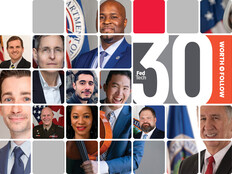Better Than Sliced Bread?
The chief technology officer has been a stealth player in the government IT arena for the past few years, in every cabinet department and in many independent agencies as well. But with the arrival of a CIO in the White House — to be followed shortly by a CTO — these innovation seekers are getting unheralded exposure.
So what exactly should an agency CTO do? A panel of feds at the recent IPIC 2009 conference in Orlando, Fla., suggest some best practices.
FBI CTO Jerome “Jack” Israel describes the job as one of the least understood in government and says he has spent the past four years at the bureau defining it. The CTO needs to be a trusted adviser to the CIO and help push the agency’s use of technology forward, he says.
In government, CTOs are mostly responsible for technology in IT, not technology broadly. “The CTO should be the person in the agency who is leading innovation” and recommending technologies that will address the agency’s mission and improve its capability, Israel says.
At the Homeland Security Department, the CTO acts as the chief data officer, says DHS CTO Daniel Cotter, who points to unearthing technologies that will create a secure environment with access controls to support true data independence as his top priority.
These roles mesh well with the management notions that President Obama has put forth for technology use in government. When he announced that District of Columbia CTO Vivek Kundra would become the federal CIO, Obama said: “I have directed him to work to ensure that we are using the spirit of American innovation and the power of technology to improve performance and lower the cost of government operations. As CIO, he will play a key role in making sure our government is running in the most secure, open and efficient way possible.”
Although an administration CTO is still to be named, Kundra and the CTO are expected to work closely together on pursuing the White House’s technology agenda.
The panel at IPIC offered five ways that federal CTOs should tackle their assignments:
- Define and overcome hurdles to change: “A federal CTO should look at the federal government and find out what are the obstacles to innovation,” and then work to resolve them, says Israel. One of the true obstacles remains the fear of protests when a CTO simply wants to bring in a technology to try out its capabilities. A CTO should be free to examine products to inform an acquisition down the road, he says, adding that “a CTO is sort of a pre-acquisition guy.”
- Make sure a technology is necessary and meshes with mission goals: A CTO needs to be enamored of technology. But, says Cotter, that doesn’t mean trying every new gadget or innovation that comes along. He says the CTO should suggest the agency acquire a new technology only if the answer to the following question is “yes”: Does it do something better than the technology we have now, in terms of meeting the mission?
- Don’t worry about being first, just worry about getting it done right: “In some ways, it is smart for the government to be a late adopter so that there is not so much risk expended that you cannot meet the mandate to serve the taxpayer efficiently, with equity and accountability,” says George Strawn, CIO at the National Science Foundation.
- Make security a CTO hallmark: Security must be considered at the front end of any innovation effort “because if you don’t do that then you will set back the innovation,” says William “Curt” Barker, chief cybersecurity adviser at the National Institute of Standards and Technology. Additionally, there needs to be a migration path to allow integration with the legacy infrastructure
- Collaborate with one another: CTOs should conduct a cross-government survey that looks at where the technology of the government as a whole is going and what technology is truly in use, Israel suggests. Based on that inventory, CTOs should work together to “raise all ships,” not just a few as is now the case, he says. “We need to find out, for instance, how many people, heaven forbid, are still using Windows NT.”








